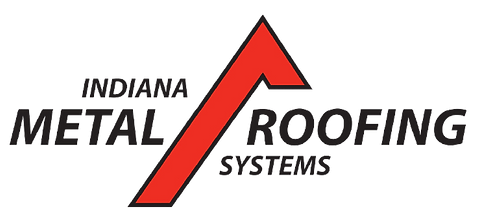Flat vs. Pitched Roofs: Key Differences Explained
- Joseph Justice
- Dec 3, 2024
- 3 min read
Choosing the right roof design is a crucial decision for homeowners and builders. Flat and pitched roofs each offer unique advantages and challenges depending on the structure, location, and intended use of the building. Indiana Metal Roofing Systems, located in Fort Wayne, IN, provides expert roofing solutions and emphasizes the importance of selecting the best roof type for your specific needs.

Structural Components: Flat vs. Pitched Roofs
The structural makeup of flat and pitched roofs differs significantly. Flat roofs, characterized by a slight or no slope, are typically constructed with materials like rubber membranes or felt sheets to provide waterproofing. While flat roofs are simpler to install and maintain, they may be prone to water pooling.
Pitched roofs, with their distinct angles, often use shingles or tiles for added durability. The steep slope of a pitched roof allows rain and snow to easily slide off, reducing water damage risks. Pitched roofs also tend to have better insulation, which can lead to lower energy costs.
Cost-Effectiveness and Long-Term Savings
Flat roofs are generally more affordable to install because of their simpler design and fewer materials. However, roof pitch also affects energy efficiency; while pitched roofs offer better insulation and ventilation, flat roofs may require additional insulation to achieve similar efficiency.
Unique Fact: A study conducted by the National Roofing Contractors Association found that flat roofs cost, on average, 20-30% less to install than pitched roofs, but pitched roofs last up to 50% longer with proper maintenance.
Environmental Impact and Energy Efficiency
Flat roofs have the potential to be more environmentally friendly. They can be equipped with green roofing systems, including solar panels and water collection systems. Their lower profile also means that they use fewer materials, making them a sustainable choice for certain building types.
Pitched roofs are naturally more energy-efficient due to their design, which helps regulate temperature more effectively. They allow for better ventilation, which keeps buildings cooler in summer and warmer in winter, reducing energy costs overall.
Aesthetic Appeal and Customization
The aesthetic choice between a flat or pitched roof is largely a matter of personal preference and architectural style. Flat roofs offer a modern, minimalist appearance, often seen in contemporary homes and commercial buildings. Pitched roofs, on the other hand, provide a more traditional look and are available in various styles, including gabled, hipped, and gambrel designs.
Homeowners may choose flat roofs for their versatility and ability to serve as additional outdoor space, while pitched roofs tend to blend better with residential neighborhoods.
Maintenance Requirements for Flat and Pitched Roofs
Flat roofs generally require less maintenance but need regular inspections to prevent water pooling and leaks. A well-maintained flat roof can last 15-30 years, depending on the materials used. Applying UV-resistant coatings can also extend the roof’s lifespan.
Pitched roofs demand more regular upkeep, particularly after severe weather. However, their steep angle helps prevent water accumulation, reducing the risk of leaks.
Indiana Metal Roofing Systems: Quality and Expertise
At Indiana Metal Roofing Systems, we prioritize craftsmanship, material quality, and customer satisfaction. We provide long-lasting roofing solutions tailored to meet the unique needs of every homeowner. With an A+ BBB rating and a 5-star Google rating, we deliver expert roofing services without high-pressure sales tactics. Our industry-leading financing options ensure fair pricing for all clients.
FAQs
1. Which roof type lasts longer?Pitched roofs tend to last longer due to their design and better weather resistance. With proper maintenance, pitched roofs can last up to 50 years, while flat roofs typically last 15-30 years.
2. Can I install solar panels on a flat roof?Yes, flat roofs are ideal for solar panel installations as they provide ample space and can be angled for maximum sunlight exposure.
3. Are flat roofs more prone to leaks?Flat roofs are more susceptible to water pooling, which can lead to leaks. Regular inspections and proper waterproofing can help mitigate this risk.
4. Do pitched roofs offer better insulation?Yes, pitched roofs typically offer better insulation due to their ability to accommodate thicker layers of insulation material and promote better air circulation.
5. What is the cost difference between flat and pitched roofs?Flat roofs are generally less expensive to install, but pitched roofs offer better long-term value due to their durability and energy efficiency.
Conclusion
When choosing between a flat or pitched roof, it's essential to weigh factors such as structure, cost, maintenance, and aesthetics. Both roofing options have their advantages, but understanding the specific needs of your building will guide you to the best choice. For expert advice and quality roofing solutions, consult with professionals like Indiana Metal Roofing Systems.
For more on Storm Damage Insurance Claims, click here.


Comments